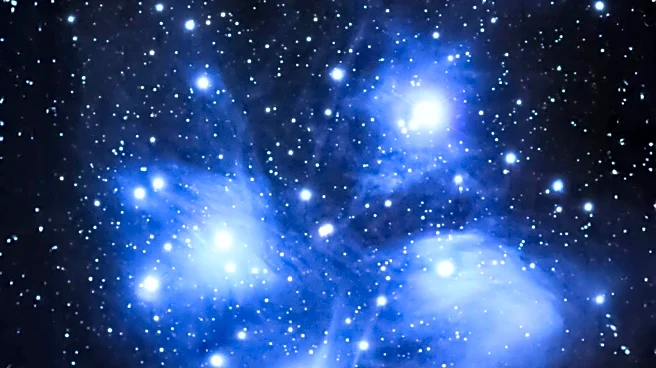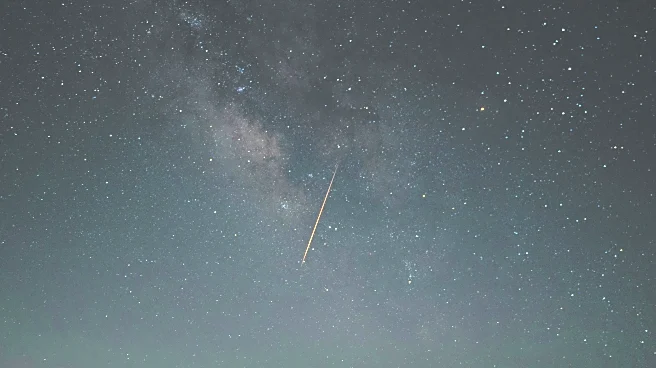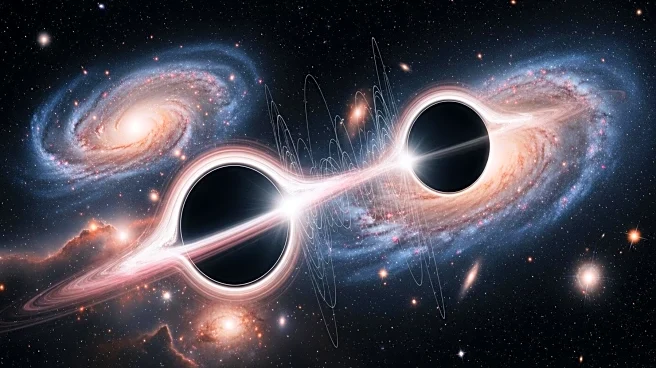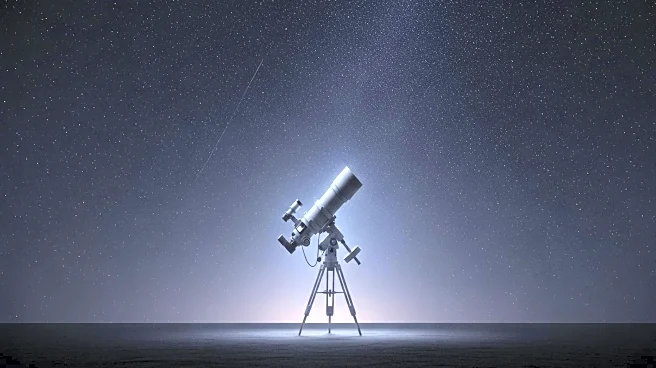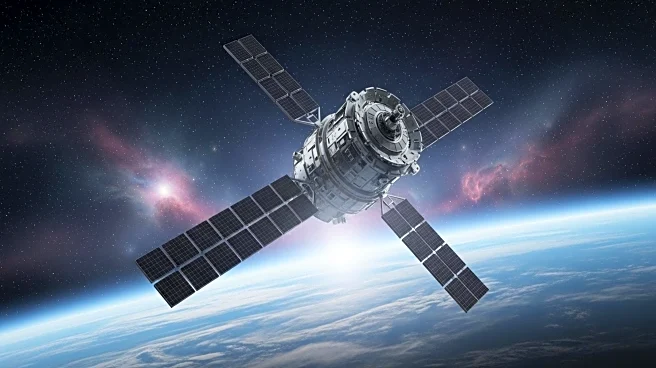What's Happening?
On the night of September 12, stargazers in the U.S. will have the opportunity to witness the waning gibbous moon appearing close to the Pleiades star cluster. The moon, 62% illuminated, will rise above the eastern horizon shortly before midnight, with the Pleiades positioned less than 5 degrees to its upper right. This celestial event offers a chance to observe the Pleiades, also known as the 'Seven Sisters,' a cluster of blue-white stars visible to the naked eye from dark locations. The presence of the moon may make viewing more challenging, but binoculars or telescopes can enhance the experience.
Why It's Important?
Astronomical events like the moon's proximity to the Pleiades provide valuable opportunities for both amateur and professional astronomers to engage with the night sky. Such events can inspire interest in astronomy and science, encouraging educational activities and public outreach. Observing celestial phenomena can also foster a greater appreciation for the universe and our place within it. Additionally, these events can serve as a reminder of the importance of preserving dark skies, free from light pollution, to ensure continued access to the wonders of the night sky.
What's Next?
Following the moon's approach to the Pleiades, observers can look forward to other celestial events, such as the shifting light over the Montes Apenninus mountain range on the moon's surface. These events provide ongoing opportunities for skywatching and photography. Amateur astronomers may continue to track the movements of other celestial bodies, such as Saturn and Neptune, which will also be visible in the night sky. The continued interest in astronomy may lead to increased participation in stargazing events and educational programs.
